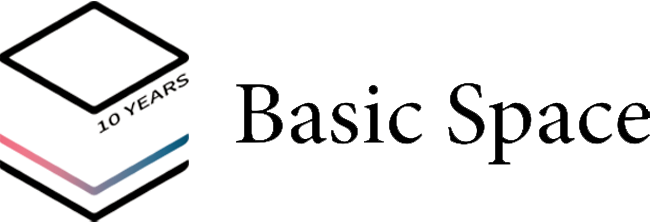Accessibility Policy
Last updated: 07 January 2020.
This policy is to be read as a statement of intentions, taking into account the voluntary nature of the Basic Space co-director role and the budgetary constraints of the organisation.
General Statement
Basic Space will have a co-director responsible for accessibility as part of the team on an ongoing basis.
Basic Space will make transparent the below policy, and be open to and encourage input and feedback from organisations and individuals regarding its activities.
Basic Space will take this accessibility policy into account with any and every project it takes on
General Responsibilities of the accessibility co-director
Work with the other co-directors on the accessibility aspects of their projects in order to lighten the load of the project manager
Continuous Research into Accessibility standards, technologies, and funding options
Nurturing contacts with relevant organisations to develop audiences dependent on projects’ accessibility
Apply the policy and inclusion guidelines both to audiences and to potential collaborators and artists
Wherever no public guidelines are available - make Basic Spaces accessibility development efforts public.
BASIC TALKS:
BASIC TALKS are held at the Hugh Lane Gallery which is physically accessible for audiences who are wheelchair users, for the HL full Access and Facilities, please visit https://www.hughlane.ie/access-and-facilities
Basic Space will work to include as part of the BASIC TALKS events standards either an Irish Sign Language interpreter or a projected live transcription in order to make the talks accessible for audiences who are Deaf or hard of hearing
Basic Space will work to include a transcript/subtitles when online documentation of BASIC TALKS is uploaded
When uploading a new BASIC TALKS page, the images should include alternative text according to the guidelines below (in online identity).
Exhibitions and Events:
Basic Space will take its accessibility policy into account when establishing partnerships
Venues are to be wheelchair accessible, with accessibility details clearly noted on the project’s web page
Artist will work with the co-directors to resolve accessibility issues, examples:
Visual art: creating tactile accompaniments, creating maquettes/replicas, producing an audio description through a descriptive tour or (for example) RFID technology
Sound art: creating visual/textual accompaniments
Installation: verification that the pieces can be experienced by wheelchair users, or creating an accompanying piece
Texts should use plain English and clear print guidelines to provide access for a wide range of audiences with disabilities including audiences with intellectual disabilities and audiences with visual impairments.
Recommended reading: https://www.shapearts.org.uk/news/accessible-curating
https://weareunlimited.org.uk/resources/
Residencies:
Open Calls for residencies should state that artists with disabilities are encouraged to apply, including finding relevant channels to advertise the open call, a list to be added to here:
ADI
University of Atypical
Basic Space will take its accessibility policy into account when establishing residency partnerships
Any public-facing outcomes should follow the guidelines for exhibitions/events
Online Identity:
Images posted to the website should use an Alternative Text, follow the guidelines on SquareSpace for instructions: https://support.squarespace.com/hc/en-us/articles/215129127-Making-your-Squarespace-site-more-accessible
Social media posts best practices guidelines: https://accessibility.umn.edu/tutorials/accessible-social-media
ASSESSMENT:
Is the work physically accessible to audiences who are wheelchair users?
Have tactile/audio accompaniments been created for the visual art?
Is sound art accompanied by visual/tactile/textual descriptions?
Are texts written in clear, plain English and printed in large enough font and high contrast?
